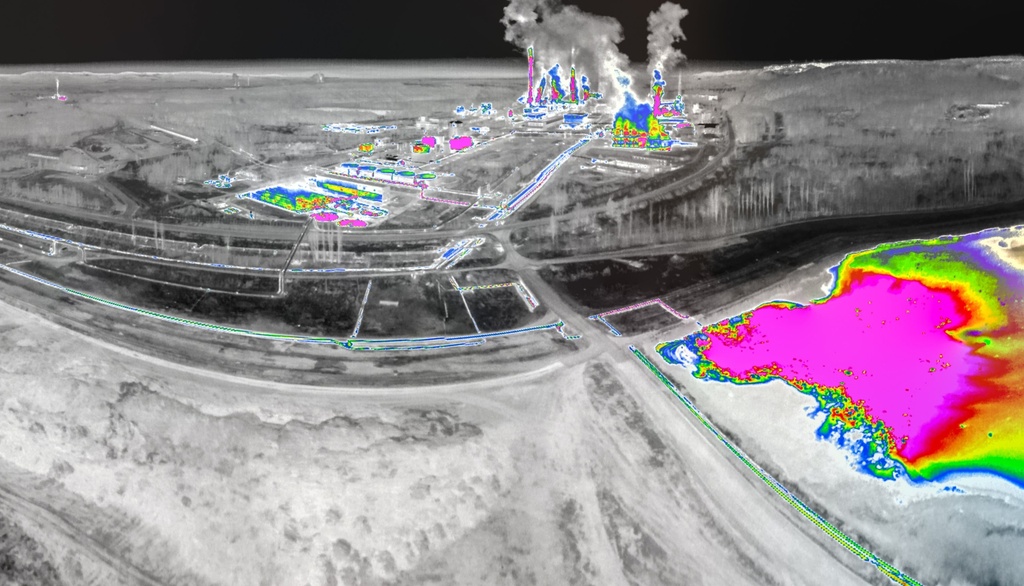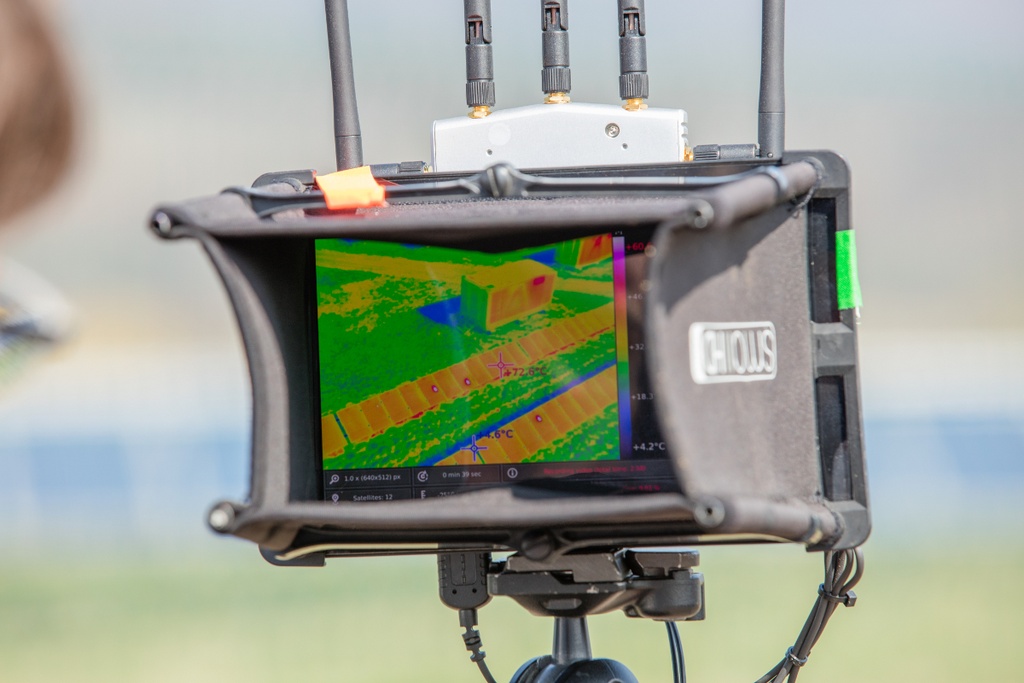Workswell WIRIS Pro 640 - 45° TTD
Caméra thermique pour drone, 640x512, 45°, 430g - Testoon Deals - PRODUIT DE DÉMO RECONDITIONNÉ
==================
Modèle: capteur 640x512, objectif 45x37°, 50mK.
==================
- Contrôle à distance par Sbus et Ethernet en plus du PWM.
- Grande compatibilité de GPS (Via Mavlink, GPS externe, bus CAN (compatible DJI A3).
- La possibilité d'enregistrer en TIFF radiométrique.
- L'enregistrement direct sur une clé USB externe.
- Des sorties numériques pour le pilotage automatique et la synchronisation GPS .
- Une entrée d'alimentation 9-36V DC.
.......
==================
Le système permet le transfert. le stockage et l'analyse en temps réel de données radiométriques (température) calibrées directement à partir du drone. et de les afficher sur le contrôleur d'un opérateur en temps réel. Le système peut enregistrer en continu des vidéos et des images radiométriques.
Caméra compacte et légère (<430g)
Consommation d'énergie optimisée: 9-36V DC. <6W.
Capteur 640x512 éléments (327680 pixels). objectif 13mm. 45x37°. 1.308 mrad.
Modes/fonctions: température point central. min/max. chaud/froid. isothermes (alarmes)...
- Enregistrement de l'image radiométrique et visible (en séparé et/ou simultané)
- Enregistrement des coordonnées GPS (via un GPS externe)
WORKSWELL WIRIS Pro
RADIOMETRIC INSPECTION THERMAL CAMERA
The Workswell WIRIS Pro is a fully radiometric thermal camera that has been specially designed for use with unmanned aerial vehicles (UAVs), or drones. The WIRIS Pro is at the forefront of a new generation of thermal cameras built for the most demanding applications, including industrial inspections, archaeology, and precision agriculture.
The Workswell WIRIS Pro is a specially designed thermodiagnostic device. Its thermal camera is equipped with an LWIR microbolometric sensor with 640×512 px resolution (in the 7.5 – 13.5 μm range), and its ‘Super Resolution Mode’ functionality can deliver a final thermogram in 1266×1010 px resolution. The RGB camera comes with Full HD (1920 x 1080 px) resolution and provides an absolutely unrivalled optical ultrazoom 10x in real-time (6.9° to 58.2° field of vision). The highest possible temperature that the thermal camera can measure is 1,500 °C (2 732 °F).
- IR Resolution : 640 x 512 pixels
- Temperature Range : -25 °C to +1500 °C (-13 °F to +2 732 °F)
- Sensitivity : 0.03 °C (30 mK)
- Memory Capacity : 128 or 256 GB SSD
- 10x Optical Zoom : with stabilization.
- Real-Time Data Analysis : immediate processing and interpretation.
Applications
Thermal and infrared imaging technologies, embodied in devices like thermal cameras and infrared cameras, have transformed several industries.. Their integration into UAVs as payloads, extends their capabilities. These tools are now essential in environmental monitoring, industrial inspections, and safety operations. Drones equipped with radiometric thermal cameras offer detailed, quantitative temperature analysis, crucial in applications like infrastructure inspection and environmental assessments.
Power Engineering Thermodiagnostics
In the realm of power engineering, thermal imaging plays a crucial role. It's used for inspecting electrical components, transformers, and generators. By detecting heat anomalies that might indicate overloads or faulty components, this technology helps in preventing equipment failures and ensuring uninterrupted power supply.
Solar panels inspection
Thermodiagnostics of Flat Roofs: For flat roofs, thermal imaging is a game-changer. It enables quick identification of water leakage and insulation issues. By pinpointing areas where heat is escaping or moisture is trapped, it guides repair teams to specific problem areas, saving time and reducing the need for invasive inspection methods.
Thermodiagnosis and Solar Plants
Solar plant efficiency greatly depends on the condition of solar panels. Thermal imaging is used to identify panels that aren't operating at peak efficiency, possibly due to defects or external factors like shading. This proactive maintenance ensures maximum energy production and longevity of the solar plant.
Security Applications
In security applications, thermal cameras offer a significant advantage. They can detect intruders based on their heat signatures, regardless of lighting conditions. This makes them ideal for monitoring sensitive areas, especially during the night or in visually obscured environments.
Thermodiagnostic Pipeline Inspection
In the oil and gas industry, pipeline inspection is critical. Thermal imaging is used to inspect pipelines for leaks or hotspots that could indicate potential failures or blockages. This not only ensures the safety and efficiency of the pipeline network but also helps in environmental protection by early detection of leaks.
Software
At Workswell, we offer more than just state-of-the-art thermal cameras; we provide a suite of sophisticated software solutions designed to maximize the potential of your thermographic equipment.
Thermolab
Thermolab is a software tool for detailed thermogram analysis, offering standard data analysis functions and extended features like GPS image location and displaying digital RGB images.
WIRIS OS
An advanced operating system for thermal cameras, ensuring full real-time data streaming and control during flights, with easy camera control through various interfaces.
WIRIS Data SDK tutorial
This tutorial likely provides guidance on using the WIRIS Data SDK, a software library for controlling Workswell WIC cameras, adjusting settings, and streaming data.
MAVLINK interface for UAV cameras
An interface used for integrating UAV cameras with MAVLINK systems, allowing for advanced control and data transmission capabilities.
WIRIS Ethernet Stream SDK
This SDK is possibly related to the streaming and control of camera data over Ethernet connections, but specific details are not available.
WIRIS CANbus & UART SDK
This software development kit likely aids in integrating WIRIS cameras with systems using CANbus and UART interfaces, allowing for advanced control and data management.

























